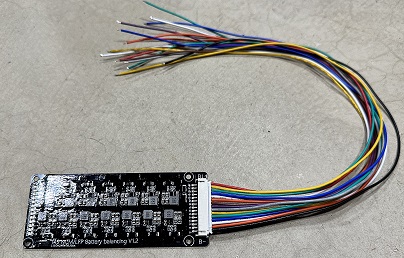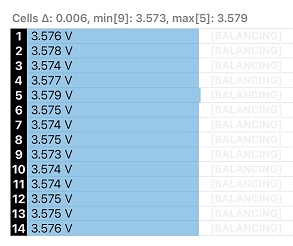
Do Lithium Batteries Need a Balancer?
Table of Contents
Yes, lithium batteries do require a balancer for safe, efficient, and reliable operation.
This is because individual cells within a lithium battery pack will eventually come out of balance which can lead to reduced performance and even safety hazards. Cells in a battery pack are like a sports team - they function best when they're all on the same page. When one cell lags behind or surges ahead in the charge-discharge cycle, it's like that teammate who's always late to practice or leaves the game before it’s finished. A balancer acts like a mediator, making sure each cell is at the right place at the right time, ensuring a harmonious and lasting relationship among the cells.
[[ aff type=cta ~ bg=`` ~ main=`Guided BMS Picker` ~ second=`Need help picking a BMS that offers balancing, use the tool found at the link below to get guided to the correct BMS. ` ~ btnText=`BMS Picker` ~ btnLink=`https://cellsaviors.com/bms-picker` ~ align=`center` ]]
Why Do Lithium Batteries Need A Balancer?
A basic balance circuit is built into almost any BMS you will find on the market. There are, however, dedicated balancers that provide additional features and higher performance. Either way, their operating principles, and functions are the same.
Improved Safety:
When cells in a battery pack have unequal charge levels, the risk of thermal runaway increases. This is because the resistance of a particularly low cell group is going to be a lot higher than the resistance of the rest of the pack. The higher the resistance, the higher the heat. Usually, when all of the cells are in a high resistance state, they can't push that much power.
So, when most of the cells are in a low resistance state and are able to push lots of power, the cells in the high resistance state will be put under a lot more pressure than they would normally ever see.
Efficient Use of Energy:
Without balancing, some cells are going to reach their full capacity before others, leading to energy waste. When this happens, the battery pack cannot take on more energy even though there is technically room for it. A balancer makes sure that no cell group gets ahead or behind another cell group in terms of its charge voltage. This ensures that they can all finish charging together without a single group switching off the entire pack before it's completely charged.
Longest Battery Lifespan:
Using a balancer helps to extend the overall life of the lithium battery. When cells are consistently charged and discharged unevenly, they become overworked at uneven rates. This accelerates the rate in which they degrade. A balancer helps to make sure that each cell group in the battery pack is charged and discharged uniformly, which helps to prevent premature wear on the cells.
Overcharge And Over Discharge Prevention
Notice I said prevention and not protection. Those protections are actually provided by other functions of the BMS, but when cells are in balance, it's a lot harder for them to get overcharged or over-discharged. Overcharging and over-discharging happens when a cell is pushed beyond its limits in one direction or the other. Both situations will cause irreversible damage to the cells and can be dangerous.
If a 10S battery is charging at 42 volts, but one cell is lower than the others, that means that all the other cells will be charged to over 4.2 volts. As previously mentioned, a BMS has other hardware to cut off charging when a cell group goes above this limit, but the point is that when all the cell groups are in balance, the BMS will never have to cut off the charging because the charging will be allowed to naturally finish.



